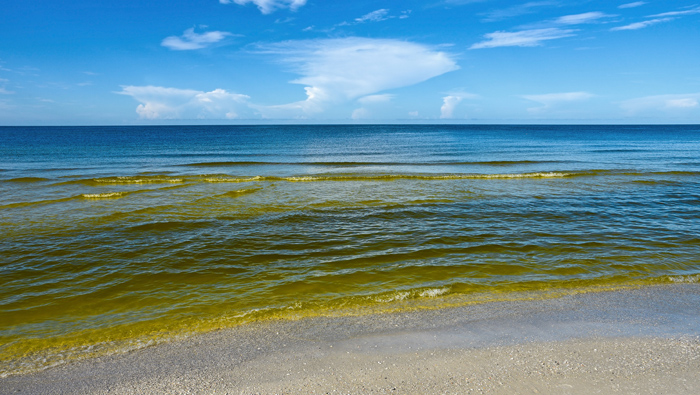
Muscat: Arid countries around the world, particularly in the Middle East, rely on seawater desalination to produce fresh water.
The rapid increase in the desalination plants has been accompanied with the expansion of Harmful Algal Blooms (HABs). This is a common phenomenon detectable in Oman waters and marked by the green or red colour of the seawater.
In the Sultanate, HABs lead to economic loss as they lead to high mortality of fish and disrupt the desalination process by clogging membranes. HABs are a concern for desalination plants due to the high algal biomass present in seawater and toxin production by some HAB species. In severe cases, desalination plants have had to shut down. During one HAB accident in 2008-2009, the desalination plant in Barka ceased operations for 55 days.
It is estimated that in the US alone HABs result in economic losses of $82 million each year.
Some of these harmful species can have resting stages called cysts that propagate when the environmental conditions are favourable.
There has been only limited information about the composition and abundances of HAB species and their cysts in Oman waters in particular near desalination plants.
Marine Science and Fisheries (MSF) Department of the College of Agricultural and Marine Sciences (CAMS) at Sultan Qaboos University (SQU) is a leader in marine science research and education in the Sultanate of Oman, and among GCC countries. The MSF focuses research mainly on fisheries, aquaculture, oceanography, ecology of marine species and marine biotechnology.
The MSF Master of Science student Ahlam Al Kharusi recently successfully defended her thesis entitled “The effect of environmental factors on Harmful Algal Blooms at Majis desalination plant, Sohar Industrial Area, the Sea of Oman”.
Her work was supervised by Dr Sergey Dobretsov, Director of Centre of Excellence in Marine Biotechnology and co-supervised by Dr Khalid Al-Khashmi and Dr Gerd Bruss. This study was partially supported by Majis Industrial Services Company.
This is the first study that investigated the presence of HABs forming algae and their cysts near a desalination plant located in an industrial area. During the study conducted from April 2018 to March 2019, water samples were taken every week and the presence of HAB species was evaluated. Ms Ahlam’s work resulted in identification of 64 species of microscopic dinoflagellates and diatoms present in the Sohar Industrial Area.
Compared to HABs in the open sea waters, which are dominated by the dinoflagellate Noctiluca scintillans, HABs in the industrial area are caused by diatom species. Some of the recorded HABs microalgae are potential toxin producing species. There has been a variation of densities of HAB species during Northeast and Southwest Monsoons.
Localised nutrient enrichment and the changes in sea water temperature were the most important factors controlling the seasonal fluctuations of HABs during the study period. For the first time, the presence of cysts was studied in sediments of Sohar Industrial Area and the port. No cysts were found near the desalination plant. However, cysts of seven HAB forming species were observed in sediments from the Sohar Industrial Port. Most of these species belonged to potentially toxin producing dinoflagellate species.
The findings of this study reveal that this area provides suitable environmental conditions for HAB-forming algae. Presence of cysts can also be one of the reasons for HABs in the studied area.
Ms Ahlam’s study also provided important recommendations for the desalination plant to mitigate and prevent HABs. Her study facilitates our understanding and prediction of HABs and the distribution and abundance of potential HABs species.